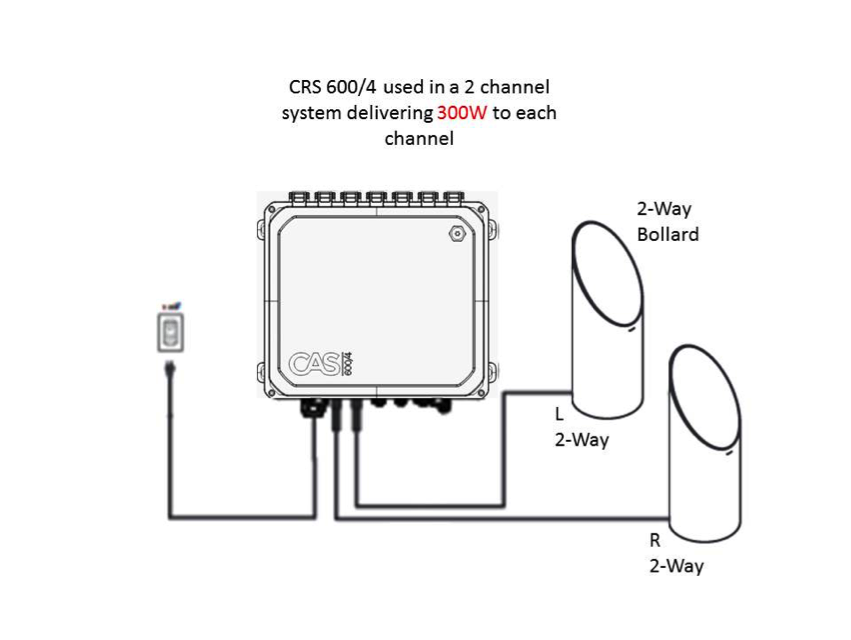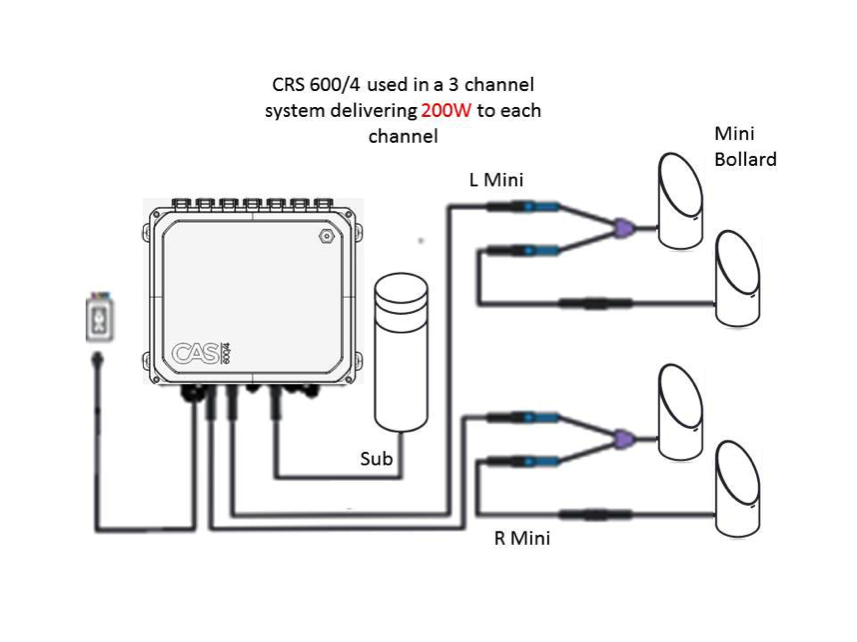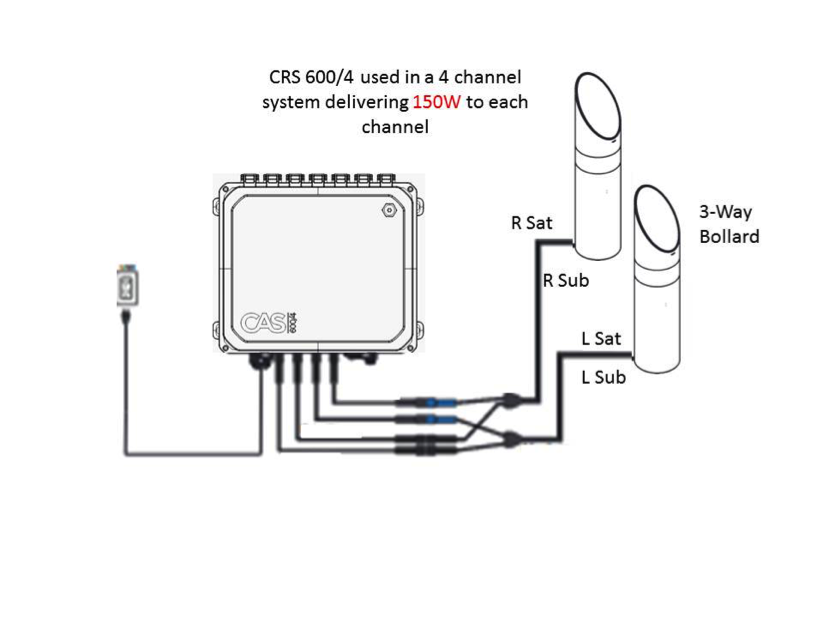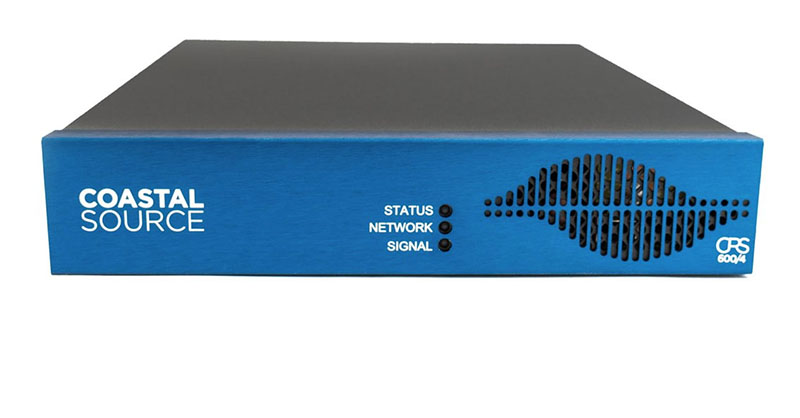
Tips and technical advice from Kevin Jozefowicz, Strateres Training and Product Specialist
Power Sharing is a technology used in the Coastal Source Component Rack Systems (CRS) series of amplifiers. In normal amplifiers, power in each channel is symmetrically divided. For instance, in a CRS 600/4 four-channel amplifier delivering a total of 600W, each channel normally delivers 150W. With Power Sharing, one or more channels can be driven to deliver more than that symmetrical 150W, reducing the available power in the other remaining channels.
This arms the installer with a powerful new advantage: the freedom to put amplifier power where it’s needed and waste less of an amplifier’s drive potential where it’s not.
An example would be the installation of a CRS series amplifier (let’s use a CRS 600/4) with 1 or 2 pairs of 3-way bollards that are bi-amped and using channels 1 and 2 for the left and right satellite sections and channels 3 and 4 for the left and right subwoofer sections. The client decides after the installation that they would like to add the 14.0 subwoofer to their system. The installer’s first thought will be, “How am I going to power this?” If you plan on using channel 3 to power the 3-way bollard subs and channel 4 to power the 14.0 sub, you might not think 150 watts is enough power. However, because the satellite sections of the bollards are not being driven to the same levels as the subs, we have excess power supply capacity available for channels 3 and 4 to draw from, and on a very low frequency, the 14.0 sub will have close to 600W available from the amplifier.
Using this capability to your advantage, it is very easy to upgrade or reconfigure a Coastal Source system. The examples below show how a 600W amplifier’s power can be symmetrically divided between 2,3 or 4 channels with no bridging of channels required.



